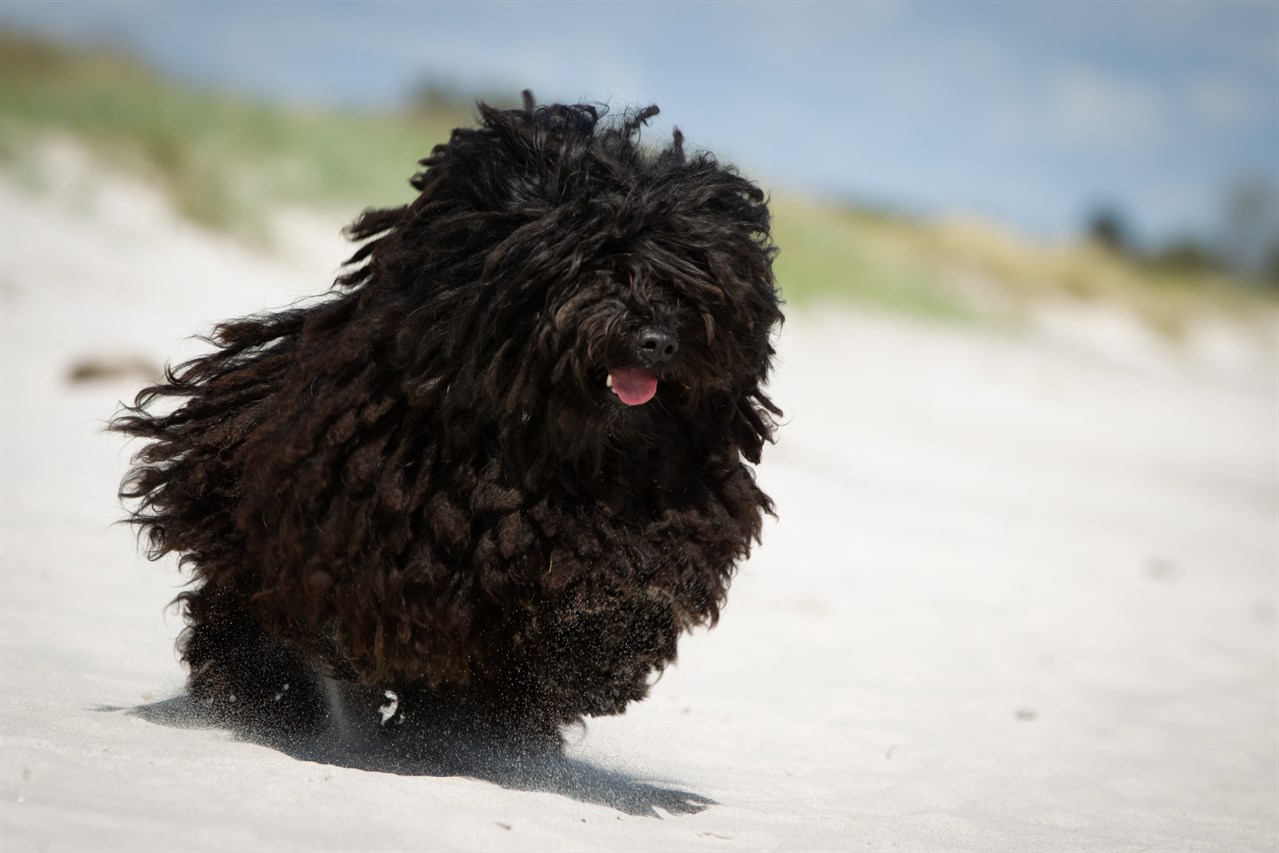Shedding Characteristics of the Puli: Minimal Shedding with a Unique Coat

The Puli's coat is one of its most distinctive features, and it plays a significant role in the breed's shedding characteristics.
Minimal Shedding
One of the benefits of owning a Puli, especially for those with allergies or a preference for low-shedding dogs, is that they are considered a breed with minimal shedding. This is primarily due to the unique texture and structure of their coat.
Corded Coat
Pulis have a dense, corded coat rather than the typical double coat found in many other breeds. The cords are formed when the soft, fluffy puppy fur naturally mats and tangles, gradually developing into the iconic "dreadlocks" or cords as the dog matures. These cords serve as insulation, protecting the dog from harsh weather conditions and the elements.
Shedding Versus Matting
While Pulis may not shed hair like many other breeds, they do require regular grooming to prevent matting. The cords must be maintained, and any mats or tangles that form need to be carefully separated and removed. Without proper grooming, the cords can become heavy and uncomfortable for the dog.
Do Puli Dogs Shed a Lot?
No, Puli dogs do not shed a lot of loose hair. Their unique corded coat prevents loose hair from being shed into the environment. However, it's important to note that their cords require regular care to prevent matting, which can be a time-consuming process.
Why Do Puli Dogs Have Dreadlocks?
Puli dogs have dreadlocks, or cords, as a result of their natural coat structure and texture. The cords develop as the soft puppy fur gradually tangles and mats with time. This unique coat served several practical purposes in their historical role as herding dogs in Hungary:
- Insulation: The cords provide excellent insulation against cold and wet weather, keeping the dog warm and dry during long hours of herding in various conditions.
- Protection: The cords offered protection from sharp branches, thorns, and other potential hazards encountered while working in rural environment.
- Camouflage: The natural colours and texture of the cords allowed the Puli to blend in with the sheep they were herding, making them less visible to potential predators.
While the cords have practical benefits, they also require diligent grooming and maintenance to prevent matting and keep the dog comfortable. Regular care ensures that the Puli's unique coat remains both functional and visually striking.
In conclusion, Puli dogs are known for their minimal shedding due to their corded coat. While they don't shed loose hair like many other breeds, their distinctive coat requires regular grooming to prevent matting and ensure the dog's comfort and well-being. The formation of cords is a natural process that serves both functional and historical purposes in the breed's role as a herding dog.